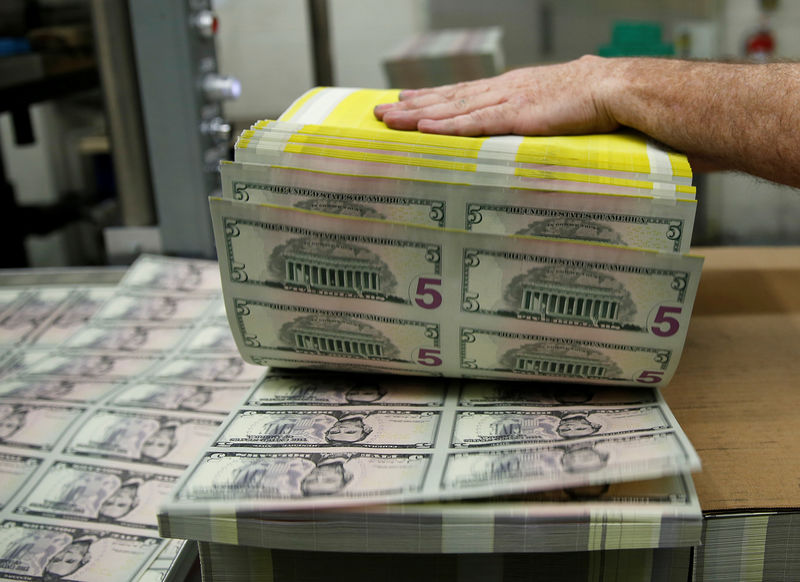 © Reuters.
© Reuters.
Investing.com - The U.S. dollar slipped lower in early European trade Tuesday, but remains close to recent highs given the prospects of higher-for-longer U.S. interest rates, while the euro faces a wages test later in the session.
At 04:45 ET (09:45 GMT), the Dollar Index, which tracks the greenback against a basket of six other currencies, traded 0.1% lower at 104.082.
Dollar quiet ahead of Fed minutes
The greenback has edged lower Tuesday with U.S. traders set to return after Monday’s Presidents’ Day holiday, but remained close to three-month highs amid mounting expectations that the Federal Reserve will delay the start of its rate-cutting cycle to the start of the summer compared with the expected March at the beginning of the year.
Data released last week showed both U.S. producer prices and consumer prices increased more than expected in January, while Fed official Mary Daly stated on Friday that there is still "more work to do" to bring inflation back down to the U.S. central bank's 2% target.
The U.S. economic data calendar is largely empty Tuesday, likely resulting in quiet trading ahead of the release of the minutes of the Fed meeting from last month, scheduled for Wednesday.
“The view that the U.S. data will turn at some point, the Federal Reserve will cut, and the dollar will decline remains a consensus one (and often translates into selling USD rallies),” said analysts at ING, in a note.
“We favor a strong dollar in the near term as U.S. data remains supportive, but this looks increasingly to be the perfect recipe for range-bound trading.”
Euro awaits ECB wage data
In Europe, EUR/USD traded 0.2% higher at 1.0795, helped data showing the eurozone's current account in a larger than expected surplus in December, pointing to economic recovery.
Traders are now keenly awaiting the release of regional fourth-quarter negotiated wages data, due later in the session, given the importance Europe's central bank has placed on wage growth as it attempts to contain inflation.
“This wage indicator had been on a steady rise since mid-2022, and a decline, even if contained, should be welcomed by the ECB,” ING added.
GBP/USD traded 0.1% higher at 1.2605, in quiet trading ahead of the release of the monthly surveys of business activity later this week.
The PMI data is expected to show that British business activity is improving, led by a surge in service-sector activity to its fastest pace since last May.
This follows Friday’s data which showed U.K. retail sales grew at their fastest pace in nearly three years in January.
China cuts key rate, yen remains weak
In Asia, USD/CNY traded largely unchanged at 7.1983, helped by a strong daily midpoint fix after the People’s Bank of China cut its benchmark five-year loan prime rate by a bigger-than-expected 25 basis points to 3.95%, a record low.
The move provided little cheer to Asian markets as it also underscored increasing government anxiety over an economic slowdown in Asia's biggest economy.
USD/JPY rose 0.1% to 150.31, with the yen weakening past the 150 level as the prospect of a slow exit from the Bank of Japan’s ultra-dovish monetary stance put pressure on the Japanese currency.
Breaks above 150 have attracted government intervention in the past, with officials also offering verbal warnings on any such moves last week.

